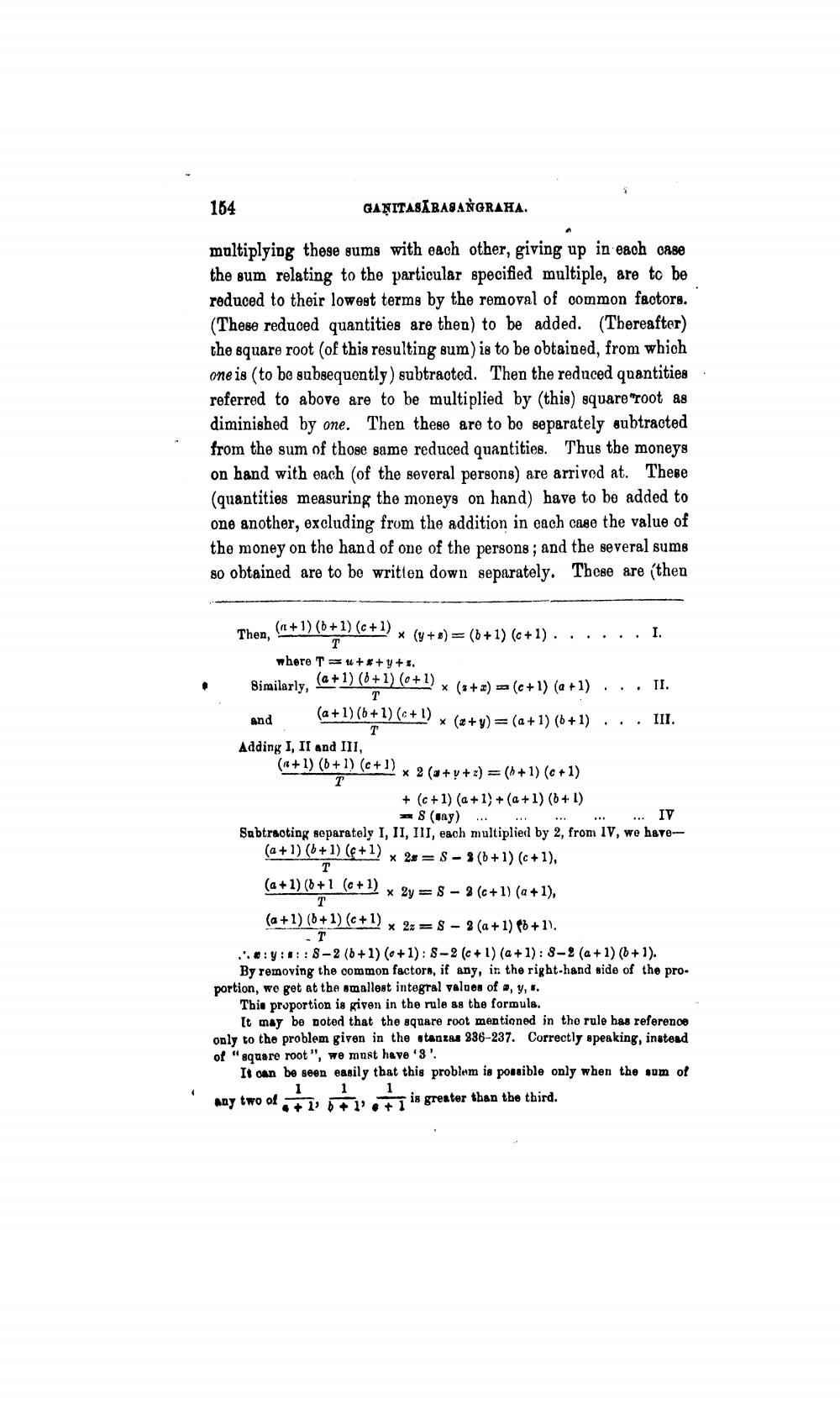________________
154
GANITASĪBASANGRAHA.
multiplying these sums with each other, giving up in each case the sum relating to the particular specified multiple, are to be reduced to their lowest terms by the removal of common factors. (These reduced quantities are then) to be added. (Thereafter) the square root of this resulting sum) is to be obtained, from which one is (to be subsequently) subtracted. Then the reduced quantities referred to above are to be multiplied by (this) square root as diminished by one. Then these are to be separately subtracted from the sum of those same reduced quantities. Thus the money, on hand with each of the several persons) are arrived at. These (quantities measuring the moneys on hand) have to be added to one another, excluding from the addition in each case the value of the money on the hand of one of the persons; and the several sums so obtained are to be written down separately. These are (then
Then, (n+1) (6+1) (c+1) (y + 8) = (6+1) (c+1). .....I.
where T u +*+ y +. Similarly, (+12 +12 (0+1)x(+)
* (*+ x) = (c+1) (a +1) ... II. and (a+1)(6+1) (C+1)
! (*+y) = (a + 1) (6 + 1)... III. Adding I, II and III, (x + 1) (6+1) (C+1)
"x 2 (a + y + z) = (+ 1) (€ +1)
+(c + 1) (a + 1) + (a +1) (0+1) * 8(way) ... ...
... ... IV Sabtracting separately I, II, III, each multiplied by 2, from IV, we have
(a + 1)(b + 1) (+1) X 2 = S-3(6+1) (c+1), (a + 1)(8 +1 (+1) x 2y = 8 - % (c + 1) (a + 1), ST (a +1) (6+1) (c+1) x 2:=S-3 (a +1) 86 + 1).
-T .. :y::::8-2 (6+1) (6+1): 8-2 (c + 1)(a + 1): 8-2 (a + 1) (6+1).
By removing the common factors, if any, it the right-hand side of the pro. portion, wo get at the smallest integral values of , y, #.
This proportion is given in the rule as the formuls.
It may be noted that the square root mentioned in the rule has reference only to the problem given in the stanzes 836-237. Correctly speaking, instead of "equare root", we must have '3'.
It can be seen easily that this problem is possible only when the sum of
any two of t
he setī is greater than the third.




